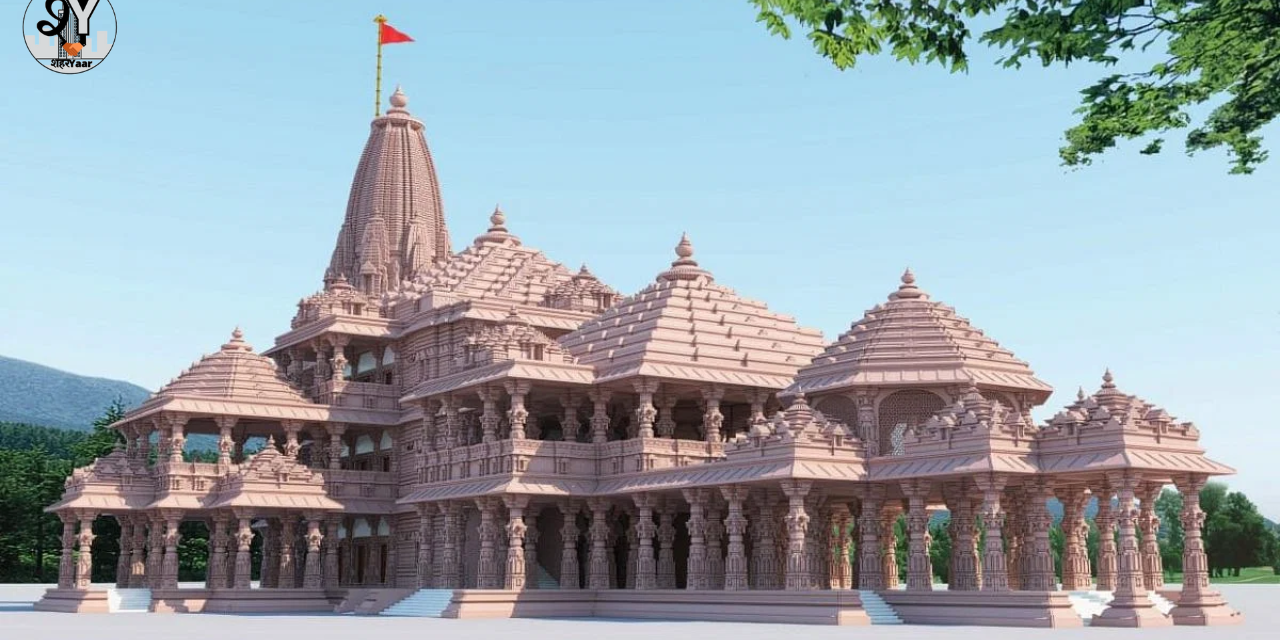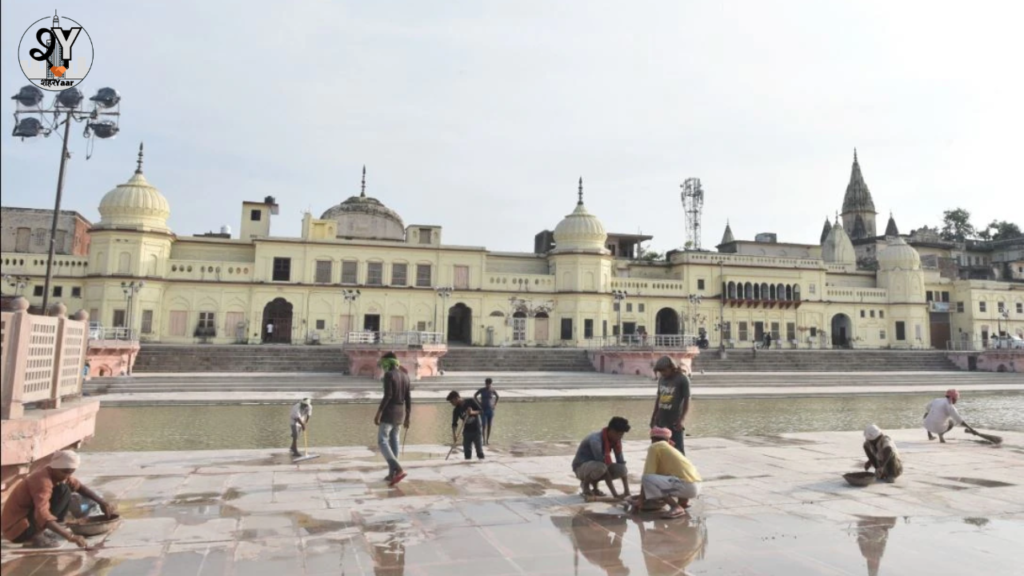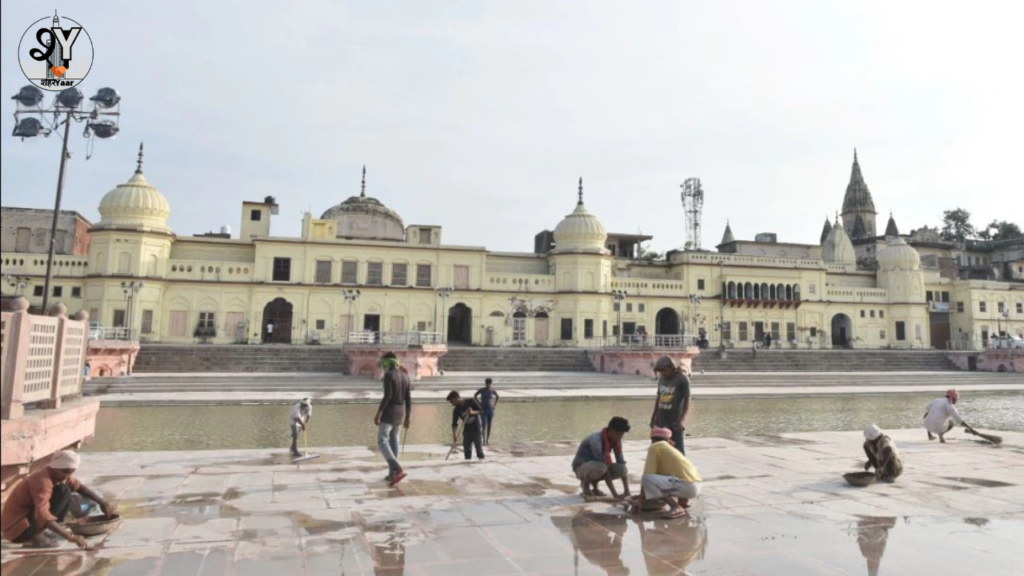
AYODHYA MANDIR- ALL THAT YOU NEEDED TO KNOW.

Ayodhya Mandir Introduction
Ayodhya Mandir, also known as the Ram Janmabhoomi temple, holds significant religious and historical importance in India. Located in the ancient city of Ayodhya in Uttar Pradesh, the temple has been the centre of a long-standing controversy that spans decades. In this comprehensive blog, we will delve into the rich history of Ayodhya Mandir, explore the contentious issues surrounding it, and examine the diverse perspectives on the subject.

I. Historical Significance
To understand the Ayodhya Mandir controversy, we must first appreciate the historical significance of Ayodhya itself. According to Hindu mythology, Ayodhya is considered the birthplace of Lord Rama, a revered deity in Hinduism. The epic Ramayana, written by Sage Valmiki, narrates the life and adventures of Lord Rama, including his birth in Ayodhya. This legend has cemented Ayodhya’s importance as a sacred site for millions of devotees.
The ancient city of Ayodhya has witnessed various dynasties and rulers over the centuries, including the Mauryas, Guptas, Mughals, and British. These periods have left their architectural and cultural imprints on the city. One prominent structure that stood at the disputed site was the Babri Masjid, which became central to the Ayodhya Mandir controversy.

II. The Ayodhya Mandir Controversy Unfolded
The Ayodhya Mandir controversy revolves around the disputed site where the Babri Masjid once stood. According to historical records, the mosque was built in the 16th century by the Mughal emperor Babur. However, Hindu groups claimed that the mosque was constructed on the ruins of an ancient temple that marked the birthplace of Lord Rama.
The dispute gained momentum in the 1980s when various Hindu organizations, led by the Vishva Hindu Parishad (VHP) and the Bharatiya Janata Party (BJP), demanded the construction of a Ram temple at the site. Tensions escalated, leading to numerous communal clashes and the tragic demolition of the Babri Masjid on December 6, 1992. The incident triggered widespread violence across the country, resulting in the loss of thousands of lives.
III. Legal Battle and Ayodhya Land Dispute
The demolition of the Babri Masjid led to a series of legal battles and investigations. This disputed site was later controlled by the government to maintain peace and stability. In 2010, the Allahabad High Court delivered a landmark judgment, dividing the disputed land into three equal parts among the Hindu and Muslim litigants and the Nirmohi Akhara, a Hindu sect.
Both Hindu and Muslim groups were dissatisfied with the judgment and subsequently appealed to the Supreme Court of India. After prolonged hearings, in November 2019, the Supreme Court delivered a historic verdict. It ruled in favour of the Hindu litigants, allowing the construction of a Ram temple on the disputed site while also directing the government to allocate an alternative plot of land for the construction of a mosque.

IV. Perspectives and Reconciliation
The Ayodhya Mandir controversy has evoked a wide range of perspectives from different sections of society. While some view it as a victory for the Hindu community and a fulfilment of their religious sentiments, others criticise the demolition of the Babri Masjid and perceive it as a setback for religious harmony.
Efforts toward reconciliation and rebuilding communal trust have also taken place. This construction of the Ram Temple has been seen as an opportunity to foster unity and healing among communities. Muslim leaders, scholars, and activists have called for dialogue and acceptance to promote interfaith harmony.

PLACES TO VISIT IN AYODHYA
- Hanuman Garhi – Hanuman Garhi, among the most popular temples in Ayodhya, is dedicated to the great Monkey God Lord Hanuman and was established by the Nawab of Awadh. The temple is distinguished by the 70 challenging steps that must be climbed to get there. Any significant Hindu holiday is the ideal time to visit the temple.
- Treta Ke Thakur Ayodhya’s– Treta Ke Thakur is a historic temple that is situated beside the Sarayu River. The temple is supposed to have Lord Ram idols carved in ancient times out of black sandstones. It is said that Lord Ram performed an Ashwamedha Yagya at this location.
- Kanak Bhawan– The area where the current temple is located was thought to once be home to another temple that Lord Ram’s stepmother Kaikeyi had given to Sita as soon as they were wed. Later, King Vikramaditya of the Paramara dynasty repaired the temple and had it rebuilt once more in 1891. One of Ayodhya’s locations with the most intricately detailed architecture is Kanak Bhawan.
- Mausoleum of Bahu Begum– Another significant historical site is the Mausoleum of Bahu Begum, also known as Bahu Begum ka Makabara, which is situated in the sacred city of Ayodhya. As the final resting place for Shuja-ud-daula’s wife Bahu Begum, the mausoleum was constructed in 1816. The mausoleum is constructed in white, and the architecture is once more in the peculiar Nawabi style. There are also well-kept, lush green gardens.
Conclusion
The Ayodhya Mandir controversy is a complex issue that intertwines religious beliefs, historical narratives, and legal judgments. This journey of the temple has been marred by controversy. Violence and communal tensions, leave scars on the social fabric of India. However, the recent verdict on this mandir by the Supreme Court offers a chance for reconciliation and moving forward.
It is essential to embrace dialogue, empathy, and understanding to ensure that the Ayodhya Mandir. It has becomes a symbol of unity and inclusivity. As the temple stands tall, it should serve as a reminder of the rich cultural heritage of India. And a catalyst for peace and harmony among its diverse communities.




